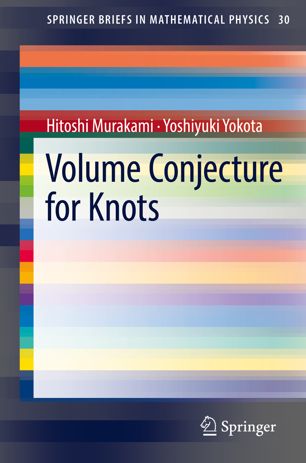

Most ebook files are in PDF format, so you can easily read them using various software such as Foxit Reader or directly on the Google Chrome browser.
Some ebook files are released by publishers in other formats such as .awz, .mobi, .epub, .fb2, etc. You may need to install specific software to read these formats on mobile/PC, such as Calibre.
Please read the tutorial at this link: https://ebookbell.com/faq
We offer FREE conversion to the popular formats you request; however, this may take some time. Therefore, right after payment, please email us, and we will try to provide the service as quickly as possible.
For some exceptional file formats or broken links (if any), please refrain from opening any disputes. Instead, email us first, and we will try to assist within a maximum of 6 hours.
EbookBell Team

4.7
36 reviewsThe volume conjecture states that a certain limit of the colored Jones polynomial of a knot in the three-dimensional sphere would give the volume of the knot complement. Here the colored Jones polynomial is a generalization of the celebrated Jones polynomial and is defined by using a so-called R-matrix that is associated with the N-dimensional representation of the Lie algebra sl(2;C). The volume conjecture was first stated by R. Kashaev in terms of his own invariant defined by using the quantum dilogarithm. Later H. Murakami and J. Murakami proved that Kashaev’s invariant is nothing but the N-dimensional colored Jones polynomial evaluated at the Nth root of unity. Then the volume conjecture turns out to be a conjecture that relates an algebraic object, the colored Jones polynomial, with a geometric object, the volume.
In this book we start with the definition of the colored Jones polynomial by using braid presentations of knots. Then we state the volume conjecture and give a very elementary proof of the conjecture for the figure-eight knot following T. Ekholm. We then give a rough idea of the “proof”, that is, we show why we think the conjecture is true at least in the case of hyperbolic knots by showing how the summation formula for the colored Jones polynomial “looks like” the hyperbolicity equations of the knot complement.
We also describe a generalization of the volume conjecture that corresponds to a deformation of the complete hyperbolic structure of a knot complement. This generalization would relate the colored Jones polynomial of a knot to the volume and the Chern–Simons invariant of a certain representation of the fundamental group of the knot complement to the Lie group SL(2;C).
We finish by mentioning further generalizations of the volume conjecture.